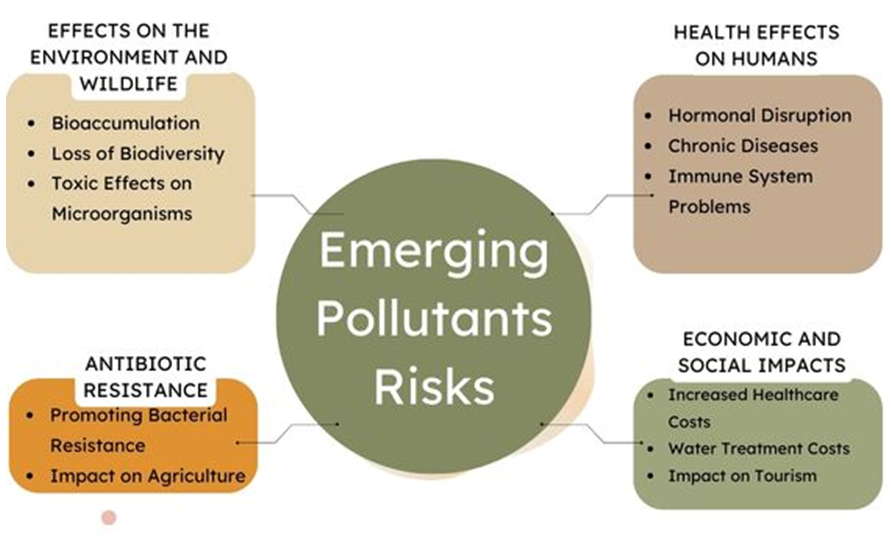Risk of Emerging Pollutants
Risk
Risk of Emerging Pollutants
Scientific research and health studies have confirmed that emerging pollutants, such as PFAS, microplastics, pharmaceuticals, and personal care products in the environment, pose significant risks to both human health and the environment
These risks include
1. Health Effects on Humans:
- Hormonal Disruption: Emerging pollutants can affect the body’s endocrine system, leading to issues with growth and reproduction.
- Chronic Diseases: Increased risk of diseases such as cancer, liver disease, and respiratory diseases.
- Immune System Problems: These pollutants can weaken the immune system, making individuals more susceptible to infections.
2. Effects on the Environment and Wildlife:
- Bioaccumulation: Emerging pollutants can accumulate in animal tissues, leading to negative effects on the entire food chain.
- Loss of Biodiversity: Impact on the health of aquatic life in rivers and lakes, leading to fish die-offs and the degradation of natural habitats.
- Toxic Effects on Microorganisms: Emerging pollutants can cause changes in microbial communities in soil and water, affecting their role in pollutant degradation.
3. Antibiotic Resistance:
- Promoting Bacterial Resistance: Exposure to low levels of antibiotics and pharmaceuticals leads to the development of resistant bacterial strains, posing a public health threat.
- Impact on Agriculture: The accumulation of antibiotics in soil and water can affect crop health and the quality of agricultural products.
4. Economic and Social Impacts:
- Increased Healthcare Costs: Due to diseases linked to exposure to emerging pollutants.
- Water Treatment Costs: Removing these pollutants from drinking water requires advanced and costly technologies.
- Impact on Tourism: The degradation of aquatic environments negatively affects tourism activities in coastal areas.
Effects



